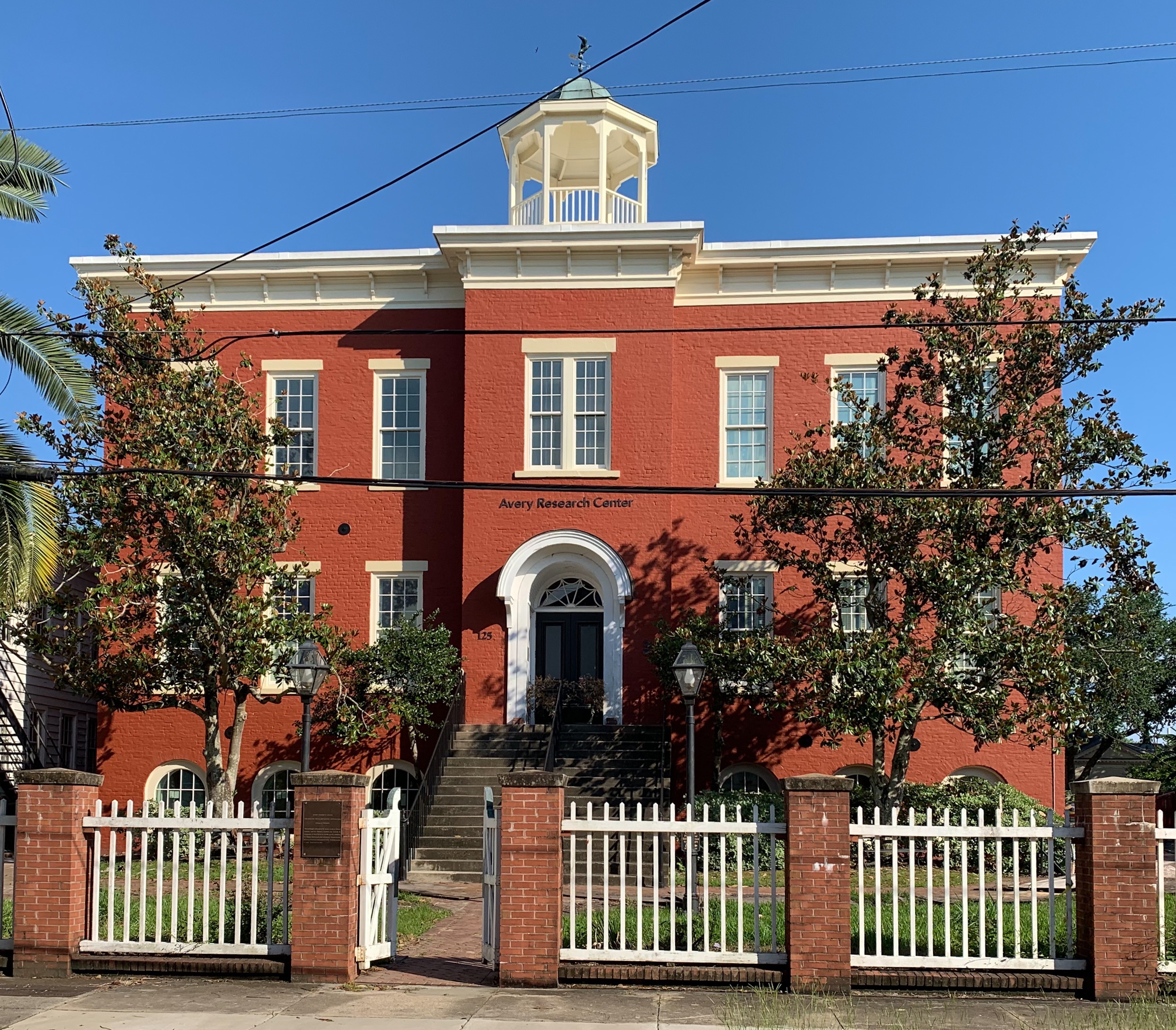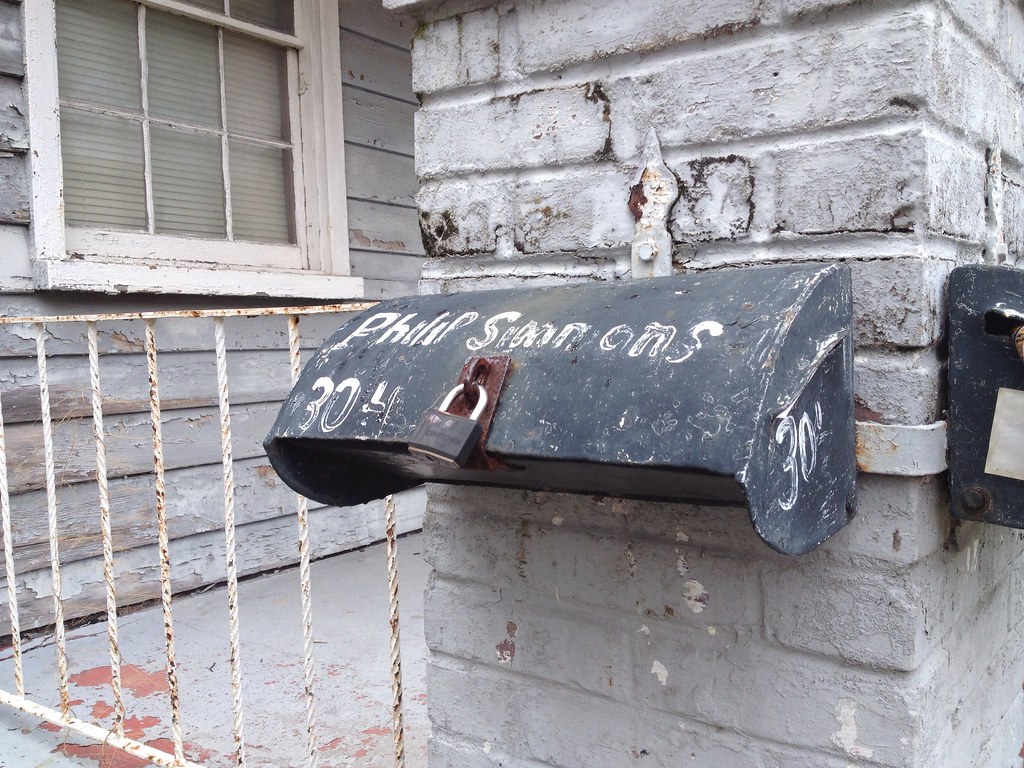An important part of any visit to Charleston, South Carolina is to honor the legacy of the Black citizens of the city through the iconic works of art, beloved cuisines, and impact on American history.
The International African American Museum will open in 2022 in the city to tell these stories. Until then, visit these landmarks and read about the people and places on African American Charleston.
This post contains affiliate links.
Learn about these African-American landmarks and many more on the Lost Stories of Black Charleston Walking Tour or the Seven Eras of Slavery History & Museum Tour in Charleston.
Avery Institute

Founded in 1865 as the Avery Normal Institute, the school was created as a school for African-American students by a missionary association. In addition to teaching students, there was a teacher education program that had alumni like Septima Clark, who taught at rural Lowcountry schools.
The Avery Institute also established the city’s chapter of the NAACP and educated many future Civil Rights Movement activists. After the Brown vs. Board of Education decision, the school merged with Burke High School and it ceased operation.
Today it’s the Avery Research Institute, operating in association with the College of Charleston. They host lectures and performances and offer guided tours. They also have archival records for research.
Catfish Row

Charleston native and writer DuBose Heyward penned the 1925 novel Porgy, which would go on to be a play and later the musical Porgy and Bess, produced by George Gershwin. It broke barriers by featuring African-American actors on Broadway.
The fictional tale of African-American residents is set in Charleston and includes words in the Gullah language. Catfish Row is based on Cabbage Row, a section of former slums near what is now Rainbow Row, the most desirable street in the city.
Charleston City Market

The Historic Charleston City Market has been in operation since 1804 and is where you can get locally made products like artwork, food, and clothing. But what makes it so unique is the artisans that make traditional sweetgrass baskets.
The Gullah tradition is over 300 years old and is only found in the Lowcountry. Prices vary by the design, but some have even been displayed in the Gibbes Museum.
If you want to see even more options, head to the Coastal Highway 17 in Mount Pleasant where dozens of sweetgrass basket weavers set up shop to sell their items.
Charles Towne Landing

Charles Towne Landing was where the colonists first arrived in modern-day South Carolina in 1670. But it’s also important to remember that the slaves also entered America here.
The park opened in 1970 to commemorate the arrival of the British with over 600 acres of interpretive areas, a zoo, and replicas. Recent excavations uncovered a slave badge and other artifacts.
Nearby Sullivan’s Island was another disembarkation point for slaves, often holding them in quarantine on ships or on land. Fort Moultrie has an exhibit on the period.
Denmark Vesey Statue

Born into slavery in the Caribbean, Denmark Vesey, also called Telemaque, lived much of his life sailing around the coast with his master. By 1800, he was able to purchase his freedom, but not that of his wife and children.
Vesey became a carpenter in Charleston and was one of the organizers of what became Mother Emanuel AME Church. He organized an uprising of freedmen, slaves, and even a few white residents.
The plan was discovered when some of the slaves told their masters. At the trial, much of the testimony was given under duress. Vesey and over 30 co-conspirators were hanged for their crimes.
Denmark Vesey’s legacy is remembered at a statue of him in Hampton Park, which was unveiled in 2014. A house in the city is known as the Denmark Vesey House, although it was later determined that he lived in another house nearby.
Gibbes Museum of Art

The Gibbes Museum of Art started as the Carolina Art Association, founded in 1858, and opened its Beaux-Arts building on Meeting Street in 1905.
Exhibitions usually have some connection with Charleston or the South and the permanent collection features colonial portraiture and more contemporary pieces.
Among the most impressive pieces are the intricate sweetgrass designs. The Gibbes also has exhibits on the Charleston Renaissance, which, like the Harlem Renaissance, influenced art, literature, and design.
DuBose Heyward was among the figures in the movement, along with wife Dorothy, writers John Bennett and Julia Peterkin, and artists Alice Ravenel Huger Smith and noted Black portraitist Edwin Harleston.
McLeod Plantation

Located on James Island, McLeod Plantation was built in 1854 on Wappoo Creek. The home is in the Georgian style and was a headquarters during the Siege of Charleston during the Revolutionary War.
During the Civil War, the plantation was occupied by the 55th Massachusetts Volunteer Regiments, a group of African-American soldiers.
The home was a part of the McLeod family until 1990. From there, it passed through a number of local institutions. It’s now a Charleston County Parks property, open as a museum.
What sets McLeod Plantation apart from other Charleston plantations is its connection to Gullah history, telling the stories of the people of color.
Mother Emanuel AME Church

After the Hampstead Church was burned following the Denmark Vesey plot, the Charleston community formed Emanuel AME Church, also referred to as Mother Emanuel, in 1817.
It has one of the oldest Black congregations in the country. After the Nat Turner slave rebellion, the city outlawed Black churches, but the congregation continued to meet in secret.
The Gothic Revival building was built in 1891 after previous versions collapsed in an earthquake. Among the members was Septima Clark, who lived nearby.
In 2015, a white supremacist entered the church during Sunday school and murdered nine people. A memorial sits outside of the church as a reminder of the tragic event.
Old Slave Mart Museum

The Old Slave Mart Museum is one of the most well-known landmarks related to Black history, depicting the abhorrent transatlantic slave trade and the arrival of slaves in America.
It was on this site that slaves were sold at auction to work at the nearby plantations starting in 1859 and ending in 1865 when Union troops occupied the city. It’s operated as a museum since the 1930s.
Philip Simmons Foundation

Philip Simmons was born on nearby Daniel Island, Simmons dropped out of school and began an apprenticeship with a blacksmith at age 13, taking on work full-time by age 18.
He set up his own blacksmith shop in 1938 on Blake Street and over 500 pieces of his ornamental gate work can now be found throughout the city. Other pieces are in Washington DC, Paris , and even China.
St. John’s Reformed Episcopal Church, where Simmons attended until his death in 2009, has a memorial garden displaying some of his gate work. Weekly ironworks demonstrations are also offered at his studio, led by his nephew, and his work is for sale.
PIN IT


Looking for a place to stay during your visit to Charleston? We recommend Hotel Bennett, which is located near many of these landmarks and owned by producer and entrepreneur Sheila Johnson.

Leave a Reply